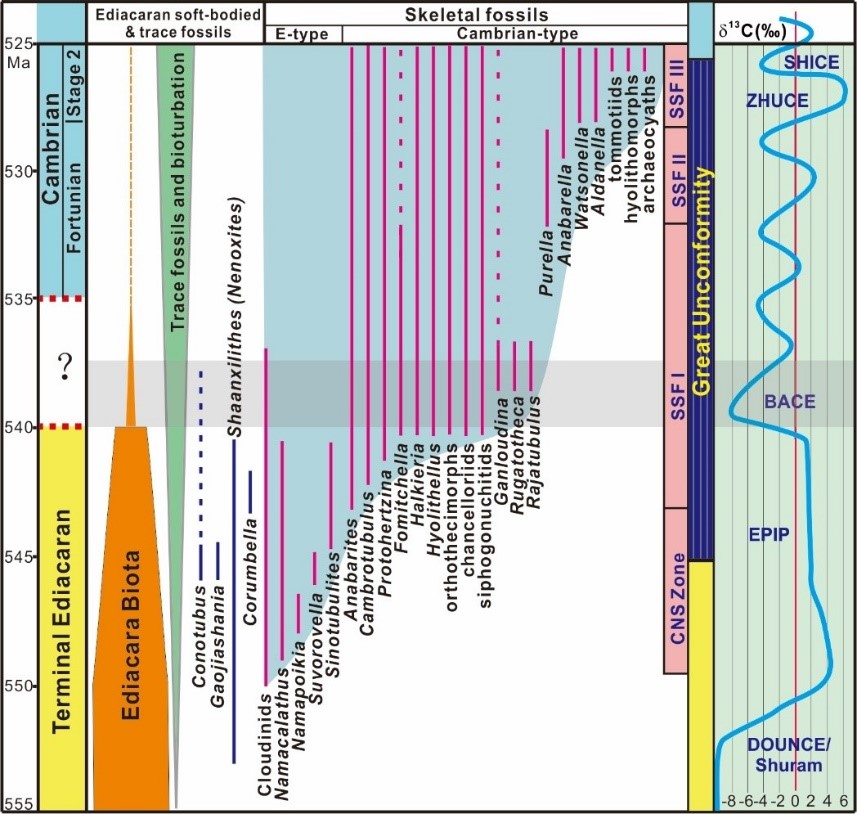Much uncertainty remains as to the temporal relationship between the Ediacaran and Cambrian biotas, yet this is critical to our understanding of the rise of metazoans. Prof. ZHU Maoyan from NIGPAS, here with his team, present new high-resolution carbon isotope chemostratigraphy and biostratigraphy for a terminal Ediacaran to Cambrian succession on the eastern Siberian Platform, Russia, which shows the presence of a succession of diverse fossil assemblages before the start of the basal Cambrian negative carbon isotope excursion (BACE).
Soft-bodied Ediacaran biota (Beltanelliformis) occurred before the start of the late Ediacaran positive carbon isotope plateau (EPIP), a mixed Ediacaran and Cambrian skeletal biota such as Cloudina, Anabarites, and Cambrotubulus. It appeared within the EPIP, and became diverse Cambrian-type small shelly fossils including Protohertzina and other protocondonts, halkieriids, chancelloriids, hyoliths, hyolithelminthes. The burrowing trace fossil Diplocraterion appeared at the beginning of the BACE. These integrated data show that taxa attributed to so-called Ediacaran and the earliest Cambrian skeletal biotas in fact overlap without notable biotic turnover, and thus refute the presence of a large isotope excursion coincident with mass extinction of all Ediacaran biota.

ZHU Maoyan and his colleagues propose a new biozone, i.e. the Cloudina-Namacalathus-Sinotubulites Assemblage Zone, to precede the known small shelly fossil (SSF) zones. These observations raise doubts as to whether there is any true separation between the Ediacaran and Cambrian skeletal biotas, and suggest that there is a deep root for the Cambrian explosion of metazoans.
Reference: Zhu MY, Zhuravlev AY, Wood RA, Zhao FC, Sukhov SS. 2017. A deep root for the Cambrian explosion: Implications of new bio- and chemostratigraphy from the Siberian Platform.Geology45(5): 459-462.DOI: https://doi.org/10.1130/G38865.1
.....CONTENTS OF PALAEONEWS NO.5.....
